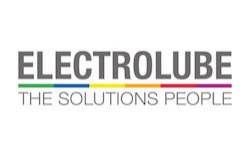Electrolube
How to remove heat from LEDs with Electrolube Thermal Management
Although LEDs are much more efficient than traditional forms of lighting, they still produce some heat. This phenomenon can have a negative effect on the LED, so appropriate measures should be taken to ensure that the positive benefits of this technology are preserved.
Electrolube has formulated a range of thermally conductive products to reduce the operating temperature of LEDs, thereby maintaining, and also increasing, their efficiency and operating life.
To dissipate heat from the LED, thermal interface materials should be used between the board and the heat sink to reduce the temperature in the junction and prolong the life of the LED. Electrolube presents heat-curing adhesives as well as non-hardening products, providing the complete solution whether the assembly is to be permanent or if LED replacement is planned later. The choice of thermal interface material will also depend on the environment and the power of the lamp. Silicone and non-silicone products are available as well as those of medium or high thermal conductivity. Electrolube’s non-hardening thermal management pastes can be applied in very thin layers while still drastically reducing the thermal resistance of the interface.
By applying a thin uniform layer of thermal interface material, maximum heat dissipation efficiency can be achieved. It is also important to consider the operating temperature conditions throughout the life of the product. Frequent temperature changes are common in LED applications, with devices turned on and off regularly. This subjects the unit to repeated thermal cycling, which heats up when turned on and cools down when turned off. With careful consideration of the correct thermal interface material and identification of the correct tests, products can be differentiated and the most suitable one for the application can be highlighted.



